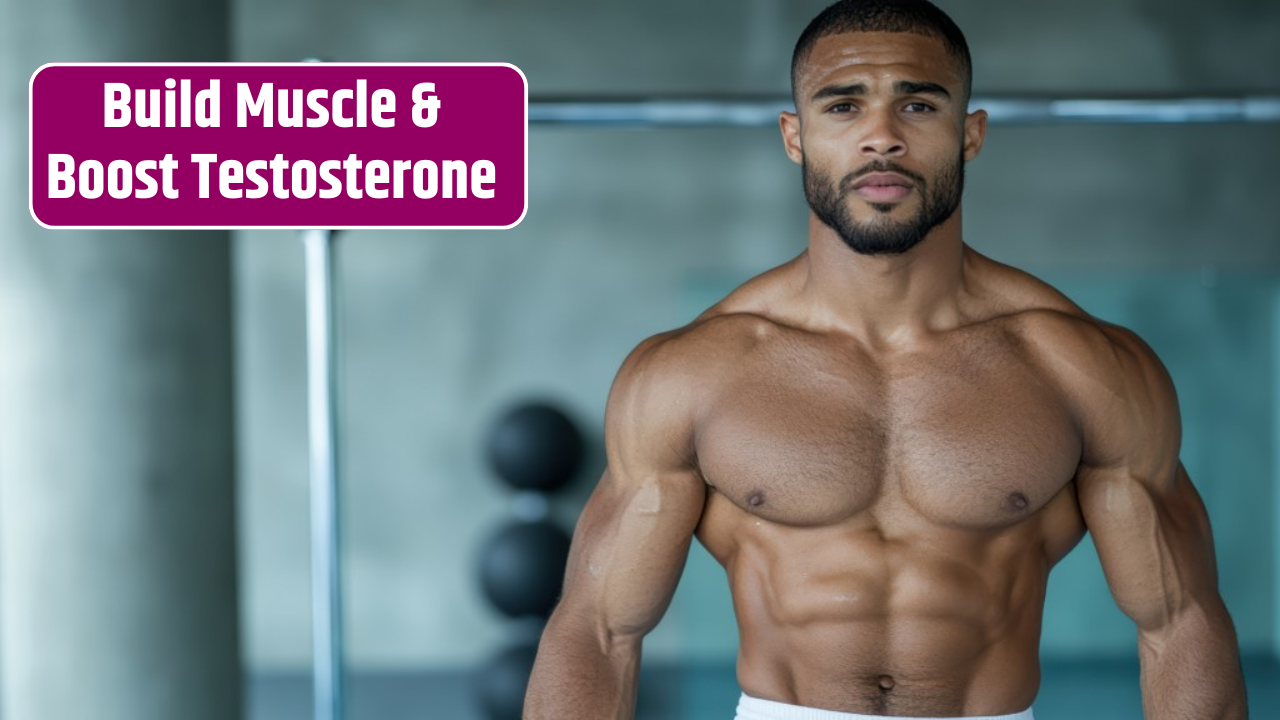If you’ve hit your 30s and noticed your metabolism slowing down, you’re not alone. The occasional beer or late-night pizza just doesn’t burn off like it used to. But here’s the good news: that “dad bod” everyone jokes about? It’s not inevitable—it’s a choice. And if you’re ready to take control, build muscle, and keep testosterone levels strong as you approach 40, strength training is your secret weapon. By focusing on powerful, compound movements, you can transform your body, boost confidence, and set yourself up for long-term health and vitality.
Let’s break down five essential strength exercises that will help you build muscle, burn fat, and keep testosterone firing on all cylinders.
1. Deadlifts: The Ultimate Full-Body Builder

The deadlift is a foundational lift that works nearly every major muscle group—from your hamstrings and glutes to your lower back, traps, and forearms. It’s a proven way to build muscle mass, increase strength, and stimulate testosterone production.
To perform a deadlift:
- Stand with feet hip-width apart, a barbell or dumbbells in front of you.
- Hinge at the hips, bend your knees, and grip the bar just outside your legs.
- Keep your back flat, chest up, and core tight as you drive through your heels to lift.
- Lower the weight with control, keeping it close to your body.
Focus on mastering form before adding heavy weight. Done correctly, deadlifts improve posture, protect against injury, and build serious strength.
| Muscles Worked | Benefits |
|---|---|
| Hamstrings, glutes, back | Builds strength, boosts testosterone, burns calories |
2. Bench Press: Build a Powerful Chest

The bench press is the go-to move for developing your chest, shoulders, and triceps while enhancing upper-body pushing power. It’s also a great metric for tracking strength gains over time.
To bench press:
- Lie flat on a bench with feet planted firmly on the ground.
- Grip the bar slightly wider than shoulder-width.
- Lower the bar to your mid-chest with elbows at a 45-degree angle.
- Press the bar back up powerfully without bouncing it off your chest.
For beginners, dumbbells may offer better control and help strengthen stabilizer muscles before progressing to the barbell.
3. Pull-Ups: Sculpt a V-Shaped Back

Want that wide, tapered back? Pull-ups are your answer. This bodyweight classic works your lats, rhomboids, biceps, and rear delts while improving posture and grip strength—perfect for counteracting hours spent at a desk.
How to do it:
- Grab a pull-up bar with an overhand grip, hands wider than shoulder-width.
- Start from a dead hang with arms fully extended.
- Pull your chest toward the bar by engaging your back muscles.
- Lower under control to the starting position.
If pull-ups are too tough at first, use resistance bands for assistance or practice negative reps by focusing on the lowering phase.
4. Squats: The King of Lower-Body Strength

Squats activate your quads, hamstrings, glutes, and core, making them one of the best exercises for building muscle and boosting testosterone. They also enhance functional strength for daily activities like walking, climbing stairs, or lifting.
To squat properly:
- Stand with feet shoulder-width apart, toes slightly turned out.
- Hold a barbell across your upper back or dumbbells at your sides.
- Push hips back, bend knees, and lower into a squat while keeping your chest up.
- Drive through your heels to stand back up.
Don’t let your knees cave inward—keep them aligned over your toes. Start with bodyweight squats to nail form before adding weight.
| Exercise | Primary Muscles Worked |
|---|---|
| Squats | Quads, glutes, hamstrings, core |
5. Overhead Press: Build Strong, Broad Shoulders

The overhead press is a must for developing strong shoulders and upper-body stability. It works the deltoids, triceps, and upper chest while engaging your core for balance.
To perform an overhead press:
- Stand with feet shoulder-width apart, holding a barbell or dumbbells at shoulder level.
- Brace your core and glutes, then press the weight straight overhead until arms are fully extended.
- Lower the weight back to shoulder height with control.
Avoid excessive arching of your lower back by keeping your ribs tucked and core engaged. Prioritize form to avoid injury and build lasting strength.
Building muscle and boosting testosterone doesn’t require fancy machines or marathon workouts. Stick to these core strength exercises, stay consistent, and pair your training with healthy nutrition and smart recovery. You’ll not only avoid the dreaded “dad bod,” but you’ll feel stronger, leaner, and more energized as you move into your 40s and beyond.
FAQs
How often should I do these strength exercises?
Aim for 2-3 strength training sessions per week, allowing at least one rest day between sessions for recovery.
Can I do these exercises at home?
Yes, many can be modified using dumbbells or resistance bands if you don’t have access to a barbell or gym equipment.
Do these exercises really boost testosterone?
Compound movements like deadlifts and squats have been shown to temporarily increase testosterone levels post-workout, supporting muscle growth and metabolism.
What’s the best way to avoid injury?
Focus on proper form, start with lighter weights, and gradually increase resistance. Don’t skip warm-ups and stretch regularly.
Can beginners do these exercises?
Absolutely—just start with lighter weights or bodyweight variations to build a solid foundation before progressing.









